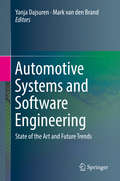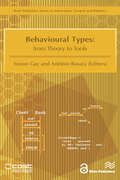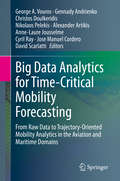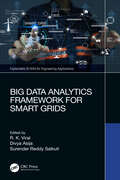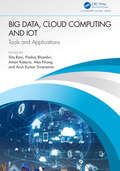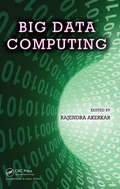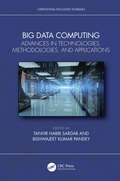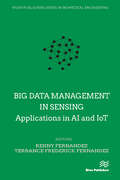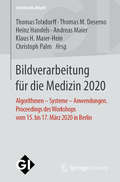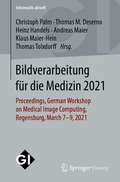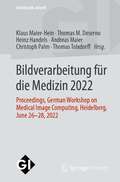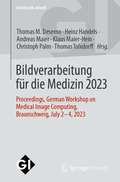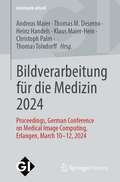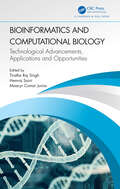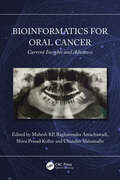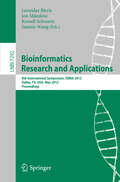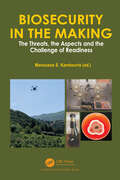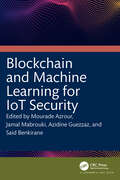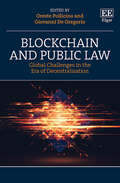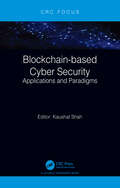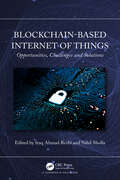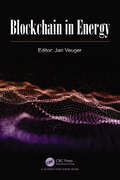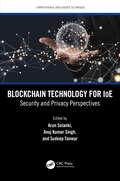- Table View
- List View
Automatisiertes Fahren 2022: Mobilität und Fahrzeugkonzepte von morgen (Proceedings)
Künstliche Intelligenz, Machine- oder Deep-Learning sind Treiber des automatisierten Fahrens. Das Zusammenspiel von künstlicher und menschlicher Intelligenz sowie die Fähigkeit von Mensch und Maschine zu kooperieren müssen in neuen Interaktionsebenen gestaltet und für zukünftige Mobilität nutzbar gemacht werden. Dafür ist es notwendig, dass die Gesellschaft diese Entwicklung akzeptiert. Vor diesem Hintergrund gewinnen Methoden, Werkzeuge und Prozesse ebenso an Relevanz wie Sensoren und Connectivity.Die Sessions der AUFA 2022 beschäftigten sich mit: Architekturen und Standardisierung.- Versicherungsthemen.- Manöverplanung.- Neue Fahrzeug- und Innenraumkonzepte.- Testverfahren und Absicherung.- Datengenerierung und Datensicherheit.- Verkehrsplanung und Geschäftsmodelle.- HMI und Fahrzeugmonitoring.
Automotive Systems and Software Engineering: State of the Art and Future Trends
This book presents the state of the art, challenges and future trends in automotive software engineering. The amount of automotive software has grown from just a few lines of code in the 1970s to millions of lines in today’s cars. And this trend seems destined to continue in the years to come, considering all the innovations in electric/hybrid, autonomous, and connected cars. Yet there are also concerns related to onboard software, such as security, robustness, and trust.This book covers all essential aspects of the field. After a general introduction to the topic, it addresses automotive software development, automotive software reuse, E/E architectures and safety, C-ITS and security, and future trends. The specific topics discussed include requirements engineering for embedded software systems, tools and methods used in the automotive industry, software product lines, architectural frameworks, various related ISO standards, functional safety and safety cases, cooperative intelligent transportation systems, autonomous vehicles, and security and privacy issues.The intended audience includes researchers from academia who want to learn what the fundamental challenges are and how they are being tackled in the industry, and practitioners looking for cutting-edge academic findings. Although the book is not written as lecture notes, it can also be used in advanced master’s-level courses on software and system engineering. The book also includes a number of case studies that can be used for student projects.
Behavioural Types: From Theory to Tools
Behavioural type systems in programming languages support the specification and verification of properties of programs beyond the traditional use of type systems to describe data processing. A major example of such a property is correctness of communication in concurrent and distributed systems, motivated by the importance of structured communication in modern software. Behavioural Types: from Theory to Tools presents programming languages and software tools produced by members of COST Action IC1201: Behavioural Types for Reliable Large-Scale Software Systems, a European research network that was funded from October 2012 to October 2016. As a survey of the most recent developments in the application of behavioural type systems, it is a valuable reference for researchers in the field, as well as an introduction to the area for graduate students and software developers.
Big Data Analytics for Time-Critical Mobility Forecasting: From Raw Data to Trajectory-Oriented Mobility Analytics in the Aviation and Maritime Domains
This book provides detailed descriptions of big data solutions for activity detection and forecasting of very large numbers of moving entities spread across large geographical areas. It presents state-of-the-art methods for processing, managing, detecting and predicting trajectories and important events related to moving entities, together with advanced visual analytics methods, over multiple heterogeneous, voluminous, fluctuating and noisy data streams from moving entities, correlating them with data from archived data sources expressing e.g. entities’ characteristics, geographical information, mobility patterns, mobility regulations and intentional data. The book is divided into six parts: Part I discusses the motivation and background of mobility forecasting supported by trajectory-oriented analytics, and includes specific problems and challenges in the aviation (air-traffic management) and the maritime domains. Part II focuses on big data quality assessment and processing, and presents novel technologies suitable for mobility analytics components. Next, Part III describes solutions toward processing and managing big spatio-temporal data, particularly enriching data streams and integrating streamed and archival data to provide coherent views of mobility, and storing of integrated mobility data in large distributed knowledge graphs for efficient query-answering. Part IV focuses on mobility analytics methods exploiting (online) processed, synopsized and enriched data streams as well as (offline) integrated, archived mobility data, and highlights future location and trajectory prediction methods, distinguishing between short-term and more challenging long-term predictions. Part V examines how methods addressing data management, data processing and mobility analytics are integrated in big data architectures with distinctive characteristics compared to other known big data paradigmatic architectures. Lastly, Part VI covers important ethical issues that research on mobility analytics should address. Providing novel approaches and methodologies related to mobility detection and forecasting needs based on big data exploration, processing, storage, and analysis, this book will appeal to computer scientists and stakeholders in various application domains.
Big Data Analytics Framework for Smart Grids (Explainable AI (XAI) for Engineering Applications)
The text comprehensively discusses smart grid operations and the use of big data analytics in overcoming the existing challenges. It covers smart power generation, transmission, and distribution, explains energy management systems, artificial intelligence, and machine learning–based computing. •Presents a detailed state-of-the-art analysis of big data analytics and its uses in power grids. • Describes how the big data analytics framework has been used to display energy in two scenarios including a single house and a smart grid with thousands of smart meters. •Explores the role of the internet of things, artificial intelligence, and machine learning in smart grids. • Discusses edge analytics for integration of generation technologies, and decision-making approaches in detail. • Examines research limitations and presents recommendations for further research to incorporate big data analytics into power system design and operational frameworks. &nb
Big Data, Cloud Computing and IoT: Tools and Applications
Cloud computing, the Internet of Things (IoT), and big data are three significant technological trends affecting the world's largest corporations. This book discusses big data, cloud computing, and the IoT, with a focus on the benefits and implementation problems. In addition, it examines the many structures and applications pertinent to these disciplines. Also, big data, cloud computing, and the IoT are proposed as possible study avenues. Features: Informs about cloud computing, IoT and big data, including theoretical foundations and the most recent empirical findings Provides essential research on the relationship between various technologies and the aggregate influence they have on solving real-world problems Ideal for academicians, developers, researchers, computer scientists, practitioners, information technology professionals, students, scholars, and engineers exploring research on the incorporation of technological innovations to address contemporary societal challenges
Big Data Computing
Due to market forces and technological evolution, Big Data computing is developing at an increasing rate. A wide variety of novel approaches and tools have emerged to tackle the challenges of Big Data, creating both more opportunities and more challenges for students and professionals in the field of data computation and analysis. Presenting a mix
Big Data Computing: Advances in Technologies, Methodologies, and Applications (Computational Intelligence Techniques)
This book primarily aims to provide an in-depth understanding of recent advances in big data computing technologies, methodologies, and applications along with introductory details of big data computing models such as Apache Hadoop, MapReduce, Hive, Pig, Mahout in-memory storage systems, NoSQL databases, and big data streaming services such as Apache Spark, Kafka, and so forth. It also covers developments in big data computing applications such as machine learning, deep learning, graph processing, and many others. Features: Provides comprehensive analysis of advanced aspects of big data challenges and enabling technologies. Explains computing models using real-world examples and dataset-based experiments. Includes case studies, quality diagrams, and demonstrations in each chapter. Describes modifications and optimization of existing technologies along with the novel big data computing models. Explores references to machine learning, deep learning, and graph processing. This book is aimed at graduate students and researchers in high-performance computing, data mining, knowledge discovery, and distributed computing.
Big data management in Sensing: Applications in AI and IoT
The book is centrally focused on human computer Interaction and how sensors within small and wide groups of Nano-robots employ Deep Learning for applications in industry. It covers a wide array of topics that are useful for researchers and students to gain knowledge about AI and sensors in nanobots. Furthermore, the book explores Deep Learning approaches to enhance the accuracy of AI systems applied in medical robotics for surgical techniques. Secondly, we plan to explore bio-nano-robotics, which is a field in nano-robotics, that deals with automatic intelligence handling, self-assembly and replication, information processing and programmability.
Bildverarbeitung für die Medizin 2020: Algorithmen – Systeme – Anwendungen. Proceedings des Workshops vom 15. bis 17. März 2020 in Berlin (Informatik aktuell)
In den letzten Jahren hat sich der Workshop "Bildverarbeitung für die Medizin" durch erfolgreiche Veranstaltungen etabliert. Ziel ist auch 2020 wieder die Darstellung aktueller Forschungsergebnisse und die Vertiefung der Gespräche zwischen Wissenschaftlern, Industrie und Anwendern. Die Beiträge dieses Bandes - einige davon in englischer Sprache - umfassen alle Bereiche der medizinischen Bildverarbeitung, insbesondere Bildgebung und -akquisition, Maschinelles Lernen, Bildsegmentierung und Bildanalyse, Visualisierung und Animation, Zeitreihenanalyse, Computerunterstützte Diagnose, Biomechanische Modellierung, Validierung und Qualitätssicherung, Bildverarbeitung in der Telemedizin u.v.m.
Bildverarbeitung für die Medizin 2021: Proceedings, German Workshop on Medical Image Computing, Regensburg, March 7-9, 2021 (Informatik aktuell)
In den letzten Jahren hat sich der Workshop "Bildverarbeitung für die Medizin" durch erfolgreiche Veranstaltungen etabliert. Ziel ist auch 2021 wieder die Darstellung aktueller Forschungsergebnisse und die Vertiefung der Gespräche zwischen Wissenschaftlern, Industrie und Anwendern. Die Beiträge dieses Bandes - einige davon in englischer Sprache - umfassen alle Bereiche der medizinischen Bildverarbeitung, insbesondere Bildgebung und -akquisition, Maschinelles Lernen, Bildsegmentierung und Bildanalyse, Visualisierung und Animation, Zeitreihenanalyse, Computerunterstützte Diagnose, Biomechanische Modellierung, Validierung und Qualitätssicherung, Bildverarbeitung in der Telemedizin u.v.m.
Bildverarbeitung für die Medizin 2022: Proceedings, German Workshop on Medical Image Computing, Heidelberg, June 26-28, 2022 (Informatik aktuell)
In den letzten Jahren hat sich der Workshop "Bildverarbeitung für die Medizin" durch erfolgreiche Veranstaltungen etabliert. Ziel ist auch 2022 wieder die Darstellung aktueller Forschungsergebnisse und die Vertiefung der Gespräche zwischen Wissenschaftlern, Industrie und Anwendern. Die Beiträge dieses Bandes - einige davon in englischer Sprache - umfassen alle Bereiche der medizinischen Bildverarbeitung, insbesondere Bildgebung und -akquisition, Maschinelles Lernen, Bildsegmentierung und Bildanalyse, Visualisierung und Animation, Zeitreihenanalyse, Computerunterstützte Diagnose, Biomechanische Modellierung, Validierung und Qualitätssicherung, Bildverarbeitung in der Telemedizin u.v.m.
Bildverarbeitung für die Medizin 2023: Proceedings, German Workshop on Medical Image Computing, Braunschweig, July 2-4, 2023 (Informatik aktuell)
Seit mehr als 25 Jahren ist der Workshop "Bildverarbeitung für die Medizin" als erfolgreiche Veranstaltung etabliert. Ziel ist auch 2023 wieder die Darstellung aktueller Forschungsergebnisse und die Vertiefung der Gespräche zwischen Wissenschaftlern, Industrie und Anwendern. Die Beiträge dieses Bandes - viele davon in englischer Sprache - umfassen alle Bereiche der medizinischen Bildverarbeitung, insbesondere die Bildgebung und -akquisition, Segmentierung und Analyse, Visualisierung und Animation, computerunterstützte Diagnose sowie bildgestützte Therapieplanung und Therapie. Hierbei kommen Methoden des maschinelles Lernens, der biomechanischen Modellierung sowie der Validierung und Qualitätssicherung zum Einsatz.
Bildverarbeitung für die Medizin 2024: Proceedings, German Conference on Medical Image Computing, Erlangen, March 10-12, 2024 (Informatik aktuell)
Seit mehr als 25 Jahren ist der Workshop "Bildverarbeitung für die Medizin" als erfolgreiche Veranstaltung etabliert. Ziel ist auch 2024 wieder die Darstellung aktueller Forschungsergebnisse und die Vertiefung der Gespräche zwischen Wissenschaftlern, Industrie und Anwendern. Die Beiträge dieses Bandes - viele davon in englischer Sprache - umfassen alle Bereiche der medizinischen Bildverarbeitung, insbesondere die Bildgebung und -akquisition, Segmentierung und Analyse, Visualisierung und Animation, computerunterstützte Diagnose sowie bildgestützte Therapieplanung und Therapie. Hierbei kommen Methoden des maschinelles Lernens, der biomechanischen Modellierung sowie der Validierung und Qualitätssicherung zum Einsatz.
Bio-Inspired Computational Paradigms: Security and Privacy in Dynamic Smart Networks
Smart cities with various technological innovations have played an important role and influenced society as well. Due to voluminous data transactions within smart cities, security and privacy concerns need to be dealt with. Though taking care of safety and privacy is challenging, it is essential for a smart city to understand the bio-inspired computing paradigms. This book discusses the utilization of bio-inspired computing procedures for effective computational devices.• Discusses real-world usage of bio-inspired computations• Highlights how bio-inspired computations hold the potential to significantly increase network security and privacy• Talks about how society can avoid consequences of cyber security breaches• Examines the combination of bio-inspired computational methods with IoT, AI and big dataThis book is primarily aimed at graduates, researchers, IT and industry professionals.
Bioinformatics and Computational Biology: Technological Advancements, Applications and Opportunities
Bioinformatics and Computational Biology: Technological Advancements, Applications and Opportunities is an invaluable resource for general and applied researchers who analyze biological data that is generated, at an unprecedented rate, at the global level. After careful evaluation of the requirements for current trends in bioinformatics and computational biology, it is anticipated that the book will provide an insightful resource to the academic and scientific community. Through a myriad of computational resources, algorithms, and methods, it equips readers with the confidence to both analyze biological data and estimate predictions.The book offers comprehensive coverage of the most essential and emerging topics: Cloud-based monitoring of bioinformatics multivariate data with cloud platforms Machine learning and deep learning in bioinformatics Quantum machine learning for biological applications Integrating machine learning strategies with multiomics to augment prognosis in chronic diseases Biomedical engineering Next generation sequencing techniques and applications Computational systems biology and molecular evolution While other books may touch on some of the same issues and nuances of biological data analysis, they neglect to feature bioinformatics and computational biology exclusively, and as exhaustively. This book's abundance of several subtopics related to almost all of the regulatory activities of biomolecules from where real data is being generated brings an added dimension.
Bioinformatics for Oral Cancer: Current Insights and Advances
Amid the rising global concern of oral cancer, this book provides a compelling exploration of the intricate oral cavity, focused on shedding light on early diagnosis and addressing outdated paradigms, it delves into the persistent challenges of oral premalignant lesions. Tailored for both beginners and researchers, its six chapters encompass the spectrum of genome sequencing, diagnostic biomarkers, gene expression, and more. Discover a fusion of basic and clinical sciences, aiming to invigorate the study of bioinformatics and oral cancer, and ultimately improve survival rates.Bioinformatics for Oral Cancer: Current Insights and Advances serves as a comprehensive guide, offering a deep dive into the multifaceted landscape of oral cancer research and bioinformatics. Within its pages, readers will uncover a wealth of knowledge, starting with foundational chapters introducing bioinformatics and establishing the backdrop of oral cancer. The book then progresses into the realm of diagnostic biomarkers, revealing cutting-edge methodologies for their identification in the context of oral cancer. The book’s keen focus extends to gene expression profiles and the intricacies of gene sequencing in the context of oral cancer progression. By systematically unravelling these critical aspects, the book bridges the gap between basic and clinical sciences, equipping readers with a holistic understanding of bioinformatics’ pivotal role in enhancing our grasp of oral cancer’s complexities.By deciphering the enigmatic landscape of oral premalignant lesions, the book equips clinicians and researchers with tools to predict malignant potentials. Its meticulous exploration of gene expression profiles and sequencing promises to reshape early detection strategies, propelling the field towards improved diagnosis and treatment outcomes.
Bioinformatics Research and Applications: 8th International Symposium, ISBRA 2012, Dallas, TX, USA, May 21-23, 2012. Proceedings (Lecture Notes in Computer Science #7292)
This book constitutes the refereed proceedings of the International Symposium on Bioinformatics Research and Applications, ISBRA 2012, held in Dallas, Texas, USA, in May 2012. The 26 revised full papers presented together with five invited talks were carefully reviewed and selected from 66 submissions. The papers address issues on various aspects of bioinformatics and computational biology and their applications.
Biosecurity in the Making: The Threats, the Aspects and the Challenge of Readiness
The explosive growth of bioeconomy and bioscience, coupled with an interconnected planet increases the potential impact of large-scale bio-events. Either causing public health threats as in epidemics or posing food security issues, from mass poisonings to large-scale starvation, such eventualities are direct threats and indirect destabilizers in a planetary context. The issue of Biosecurity thus pervades every affected aspect, from exploitations of the agro-sector and the food industry to the Public Health management, the novel therapeutic/treatment approaches, the new age of space, deep-sea and subterranean explorations and the interface with the cyber world and the massive or small-scale projection of violence. It has been present since ancient times tacitly and discreetly but only recently took its present guise, the different aspects of which are explored in this book.
Blockchain and Machine Learning for IoT Security
The Internet of Things (IoT) involves physical devices, cars, household appliances, and any other physical appliance equipped with sensors, software, and network connections to gather and communicate data. Nowadays, this technology is embedded in everything from simple smart devices, to wearable equipment, to complex industrial machinery and transportation infrastructures. On the other hand, IoT equipment has been designed without considering security issues. Consequently, there are many challenges in terms of protection against IoT threats, which can lead to distressing situations. In fact, unlike other technological solutions, there are few standards and guidelines governing the protection of IoT technology. Moreover, few users are aware of the risks associated with IoT systems. Hence, Blockchain and Machine Learning for IoT Security discusses various recent techniques and solutions related to IoT deployment, especially security and privacy. This book addresses a variety of subjects, including a comprehensive overview of the IoT, and covers in detail the security challenges at each layer by considering how both the architecture and underlying technologies are employed. As acknowledged experts in the field, the authors provide remediation solutions for impaired security, as well as mitigation methods, and offer both prevention and improvement suggestions. Key Features: Offers a unique perspective on IoT security by introducing Machine Learning and Blockchain solutions Presents a well-rounded overview of the most recent advances in IoT security and privacy Discusses practical solutions and real-world cases for IoT solutions in various areas Provides solutions for securing IoT against various threats Discuses Blockchain technology as a solution for IoT This book is designed to provide all the necessary knowledge for young researchers, academics, and industry professionals who want to understand the advantages of artificial intelligence technology, machine learning, data analysis methodology, and Blockchain for securing IoT technologies.
Blockchain and Public Law: Global Challenges in the Era of Decentralisation
This important and topical book provides a comprehensive overview of the challenges raised by blockchain from the perspective of public law. It considers the ways in which traditional categories of public law such as sovereignty, citizenship and territory are shaped, as well as the impact of blockchain technology on fundamental rights and democratic values.Articulated in two sections, the first analyses the opportunities and the challenges that blockchain and distributed ledger technologies raise in the field of public and constitutional law, while the second highlights challenges derived from the intersection between blockchain and other legal fields such as contract law, financial law and antitrust law. A wide variety of expert contributions offer further examinations of the constitutional challenges of blockchain technologies that provide regulatory options for governments and lawmakers.Blockchain and Public Law will be a critical point of reference for scholars and students of legal theory, public policy and governmental law. It will also be beneficial to legal practitioners and lawmakers to further develop their knowledge of the field of blockchain at national and international levels.
Blockchain-based Cyber Security: Applications and Paradigms
The book focuses on a paradigm of blockchain technology that addresses cyber security. The challenges related to cyber security and the solutions based on Software Defined Networks are discussed. The book presents solutions to deal with cyber security attacks by considering real-time applications based on IoT, Wireless Sensor Networks, Cyber-Physical Systems, and Smart Grids. The book is useful for academicians and research scholars worldwide working in cyber security. It is also useful for industry experts working in cyber security.
Blockchain-based Internet of Things: Opportunities, Challenges and Solutions
This book presents an overview of the blockchain-based Internet of Things systems, along with the opportunities, challenges, and solutions in diverse fields such as business, education, agriculture, and healthcare. It discusses scalability, security, layers, threats, and countermeasures in blockchain-based Internet of Things network.· Elaborates on the opportunities presented by combining blockchain with artificial intelligence on the Internet of Things systems in the management of food systems, and drug supply chains.· Explains the management of computationally intensive tasks in blockchain-based Internet of Things through the development of lightweight protocols.· Presents various applications in fields including logistics and the supply chain, automobile industry, smart housing, shared economy, and agriculture.· Provides insights into blockchain-based Internet of Things systems, along with their features, vulnerabilities, and architectural flaws.· The text is primarily written for graduate students, and academic researchers working in the fields of computer science and engineering, electrical engineering, and information technology.
Blockchain in Energy
The global energy crisis is accelerating, and within Europe, the European Union (EU) is actively working to address this challenge through policy frameworks and political management. However, the energy market remains fiercely competitive, prompting us to explore alternative energy sources and rethink how we generate, distribute, and utilize power. This, in turn, raises questions about the allocation of power, energy availability, and usage in various contexts.Furthermore, the digital realm is undergoing rapid transformation across multiple sectors. Drawing on my expertise in blockchain technology, I recognize numerous opportunities to enhance the transparency and reliability of data related to energy issues. By leveraging blockchain, we can ensure that the information available is trustworthy and insightful for every user.The aim of this book is to share my knowledge in the realm of energy and blockchain. It addresses the urgency of addressing global energy challenges and acknowledges the pivotal role of the EU in this endeavor. It also highlights the intensity of competition in the energy market and the need for innovative approaches. The book also demonstrates how blockchain can contribute to solving these issues, empowering individuals and organizations with reliable information and insights in the field of energy and blockchain technology.
Blockchain Technology for IoE: Security and Privacy Perspectives (Computational Intelligence Techniques)
This book explores opportunities and challenges in the field of Internet of Everything (IoE) security and privacy under the umbrella of distributed ledger technologies and blockchain technology including distributed consensus mechanisms, crypto-sensors, encryption algorithms, and fault tolerance mechanisms for devices and systems. It focusses on the applicability of blockchain technology, including architectures and platforms for blockchain and IoE, authentication and encryption algorithms for IoE, malicious transactions detection, blockchain for forensics, and so forth. Outlines the major benefits as well as challenges associated with integration of blockchain with IoE; Describes detailed framework to provide security in IoE using blockchain technology; Reviews various issues while using distributed ledger technologies for IoE; Provides comprehensive coverage of blockchain for IoE in securing information including encryption schemes, authentication, security issues, and challenges; Includes case studies in realistic situations like healthcare informatics, smart industry, and smart transportation. This book is aimed at researchers and graduate students in computing, cryptography, IoT, computer engineering, and networks.

